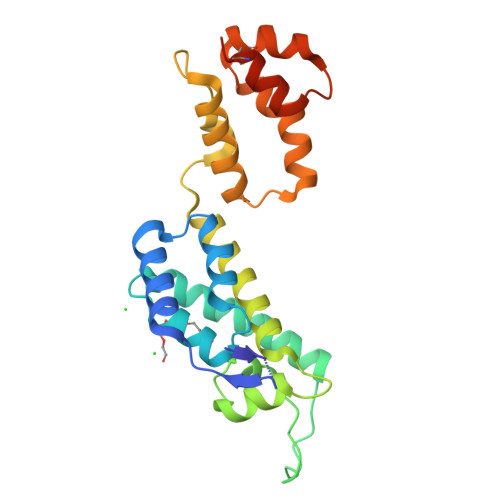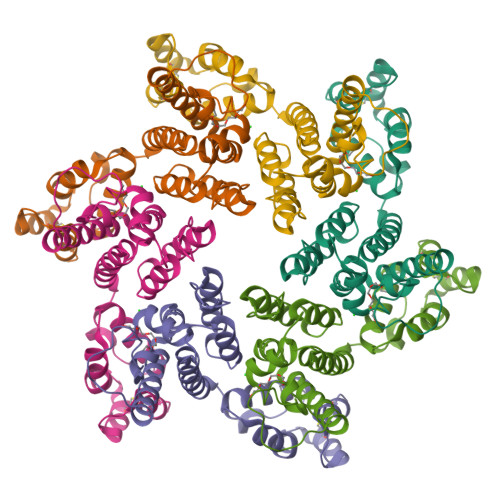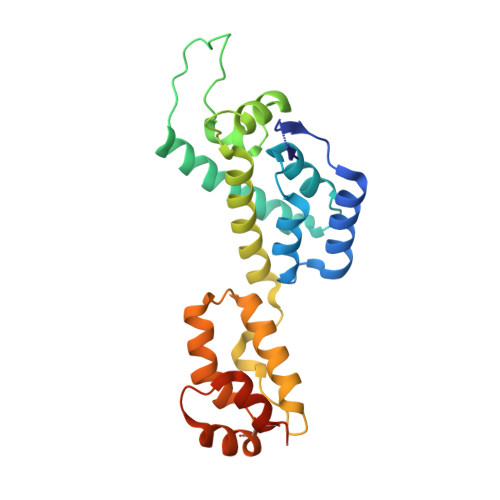STRUCTURAL VIROLOGY. X-ray crystal structures of native HIV-1 capsid protein reveal conformational variability.
Gres, A.T., Kirby, K.A., KewalRamani, V.N., Tanner, J.J., Pornillos, O., Sarafianos, S.G.(2015) Science 349: 99-103
- PubMed: 26044298
- DOI: https://doi.org/10.1126/science.aaa5936
- Primary Citation of Related Structures:
4XFX, 4XFY, 4XFZ - PubMed Abstract:
The detailed molecular interactions between native HIV-1 capsid protein (CA) hexamers that shield the viral genome and proteins have been elusive. We report crystal structures describing interactions between CA monomers related by sixfold symmetry within hexamers (intrahexamer) and threefold and twofold symmetry between neighboring hexamers (interhexamer). The structures describe how CA builds hexagonal lattices, the foundation of mature capsids. Lattice structure depends on an adaptable hydration layer modulating interactions among CA molecules. Disruption of this layer alters interhexamer interfaces, highlighting an inherent structural variability. A CA-targeting antiviral affects capsid stability by binding across CA molecules and subtly altering interhexamer interfaces remote to the ligand-binding site. Inherent structural plasticity, hydration layer rearrangement, and effector binding affect capsid stability and have functional implications for the retroviral life cycle.
Organizational Affiliation:
Christopher S. Bond Life Sciences Center, University of Missouri, Columbia, MO 65211, USA. Department of Chemistry, University of Missouri, Columbia, MO 65211, USA.




















